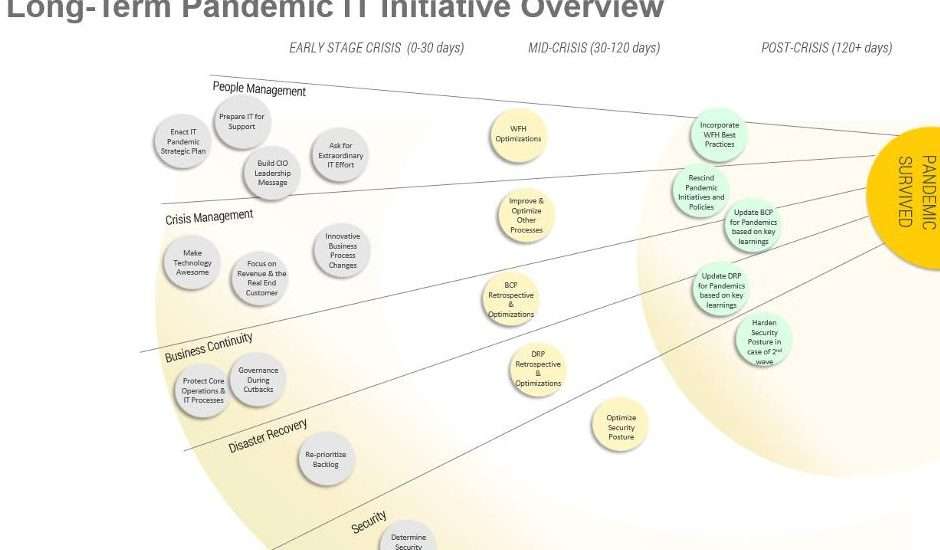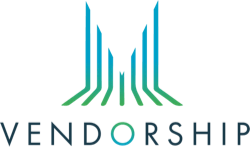
Share This
WHAT NEEDS TO BE IN A CIO’S COMMUNICATION FRAMEWORK FOR COVID-19
Manufacturing CEOs & CIOs Anticipated Disruption Early
Over 95% of the many manufacturing CEOs and CIOs I’ve interviewed in the last two weeks began creating contingency and continuity planning teams as early as January when COVID-19 showed signs of impacting supply chains outside of China. They and their teams modeled worst-case scenarios of suppliers not being able to deliver and the potential impact on customers’ delivery dates. Every one of them initiated work-from-home programs and assigned a VP or C-level team member to own employee health and wellness. As a result, every manufacturer I’ve interviewed is operating at least one shift with those producing much-needed medical and surgical supplies running a full three shifts while at the same time abiding by CDC guidelines.
I also learned how critical CIOs are to the success of these contingency and continuity planning efforts. They and their teams are keeping the digital communication lines open with customers, suppliers, channel partners, and employees while thwarting more cyberattacks as hackers attempt to capitalize on the chaos happening today.
What’s On CIOs’ Communication Framework
Realizing that uncertainty over IT is a potential roadblock in keeping an entire organization running, contingency teams also placed a high priority on having a robust communication framework. Supporting their full company’s workforce who is working from home while providing production teams with the data they need makes the CIOs’ communication framework essential for continued operations.
Manufacturers shared with me confidentially their communication frameworks, and Info-Tech Research Group’s framework The Essential Ten-Step Guide to Building & Communicating Your CIO Strategy for COVID-19 most closely matches what they’re using today. The following is their long-term pandemic IT initiative overview:
Here are several key insights from their framework:
Helping customers need to be the highest priority of all, and a CIOs’ communication framework needs to reflect and reinforce how this gets done. The manufacturers who were planning well ahead of the pandemic’s impact on the U.S. had more time to plan and take action to help their customers deal with the initial panic of the epidemic and continue operating. Senior management immediately began calling their most valuable customers, offering advice, direct contact information, and seeing how each customer was holding up. CIO’s communication frameworks also need to define how their department and others can remove friction or roadblocks customers face when trying to get their help. Info-Tech advises CIOs to ramp up their call centers and see the pandemic as an opportunity to excel in the service of their customers. One CEO said Maersk’s offering to customize logistics and supply chain management based on COVID-19’s impact in China months ago helped preserve their margins and profits this quarter.
Fast-track cybersecurity projects and secure each device because they are now the security perimeter of your business. Zero Trust Security is gaining momentum as the proliferation of mobile devices compel organizations to rethink their approaches to enterprise-wide cybersecurity. Companies to watch in this area include Absolute Software, Centrify, Kount, MobileIron, and others that are worth watching in 2020. Absolute is well-known for its Absolute Resilience endpoint security platform that provides a persistent connection to devices, data, and business applications, enabling complete visibility and control wherever they are. I recently wrote about how Absolute protects patient data at Apria Healthcare. At the recent RSA Conference, Centrify was the only vendor who prioritized enforcing FIDO2-based privileged administrator logins. Why Your Biometrics Are Your Best Password explains where the cybersecurity industry is on adopting the FIDO2 standard. Kount’s Email First Seen capabilities provide insights into whether an e-mail is trustworthy or not. Among the many solutions for securing mobile devices, MobileIron’s UEM platform with MobileIron Threat Defense (MTD) is noteworthy in how it enables organizations to detect and remediate mobile threats, including app, device and network attacks, even when the device is offline. Defining cybersecurity plans and actions need to be a core part of a CIO’s communication framework to be effective.
CIO Communication Frameworks are foundational to business continuity. One of the most valuable takeaways from conversations with manufacturing CEOs, CIOs, and the Info-Tech Research Group’s framework is that IT must be focused on how any disruption is going to change the business model, customer, and supplier relationships fast. Anticipating how IT will have to adapt to keep a business operating needs to be part of a communication framework; the best ones take this factor into account today.
CIOs best navigating this pandemic are proving adept at orchestrating IT support for business models, business & manufacturing operations, and supporting new business units created in response to current conditions. An example is a leading plastics manufacturer who is quickly ramping up their medical connector and device manufacturing, partnering with the FDA to gain certifications and moving to medical kit production in a fraction of the time it had taken in the past. Communicating how eager the FDA is to partner with a manufacturer boosts morale immediately and energizes production teams to get needed medical supplies shipped. Having a communication framework accelerates much-needed good news across the many manufacturers who are the cornerstone of solving medical supply shortages healthcare professionals are dealing with daily.
